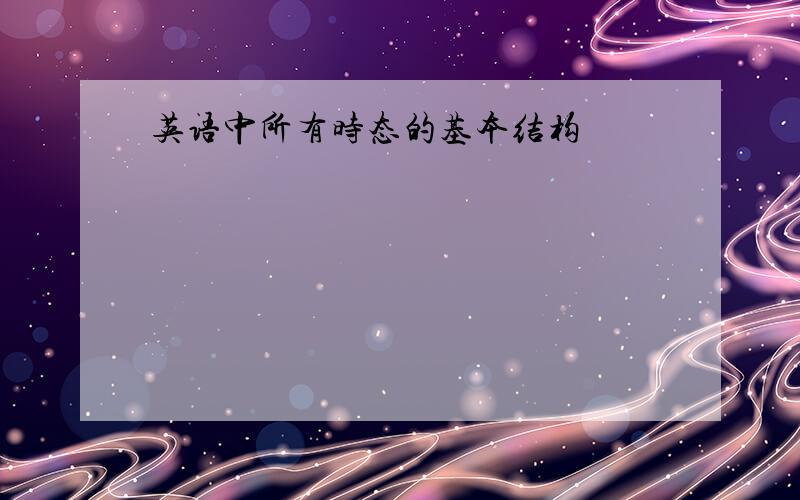英语中所有时态的基本结构
来源:学生作业帮助网 编辑:作业帮 时间:2024/04/29 11:17:44

英语中所有时态的基本结构
英语中所有时态的基本结构
英语中所有时态的基本结构
一、现在一般时:Sub do Obj
例句:I go to school everyday.
二、过去一般时:Sub did Obj + 表示过去的状语
例句:Tom suddenly fell in yesterday.
三、将来一般时:Sub will (shall) do Obj + 表示将来的状语
例句:He will come next week.
四、过去将来一般时:Sub would (should) do Obj
例句:You knew I would come.
五、现在完成时:Sub has done Obj
例句:The car has arrived.
六、过去完成时:Sub had done Obj + 表示过去时间的状语
例句:I had finished my homework before supper.
七、将来完成时:Sub will (shall) have done Obj +表示将来的状语
例句:I shall have finished reading the book by the end of this week.
八、过去将来完成时:Sub would have done Obj +表示过去将来的时间状语
例句:The day was drawing near when we would have completed the reservoir.
九、现在进行时:Sub be doing Obj
例句:What are you doing now,John?
十、过去进行时:Sub was doing Obj
例句:I was practising the violin at eight o’clock yesterday evening.
十一、将来进行时:Sub will be doing Obj + 标将来的时间状语
例句:What will you be doing this time tomorrow?
十二、过去将来进行时:Sub would be doing Obj
例句:John told us that Mary would be coming next day.
十三、现在完成进行时:Sub has been doing Obj + 状语
例句:I have been writing letters all this morning.
十四、过去完成进行时:Sub has been doing Obj + 表示过去时间的状语
例句:The telephone had been ringing for three minutes before it was answered.
十五、将来完成进行时:Sub will (shall) has been doing Obj + 表示将来某一时间的状语
例句:The play is coming off in August.By then the play will have been running for three months.
十六、过去将来完成进行时:Sub would has been doing + 状语
例句:He said that by the end of the Spring term he would have been studying English for three
sub--主语 obj --宾语